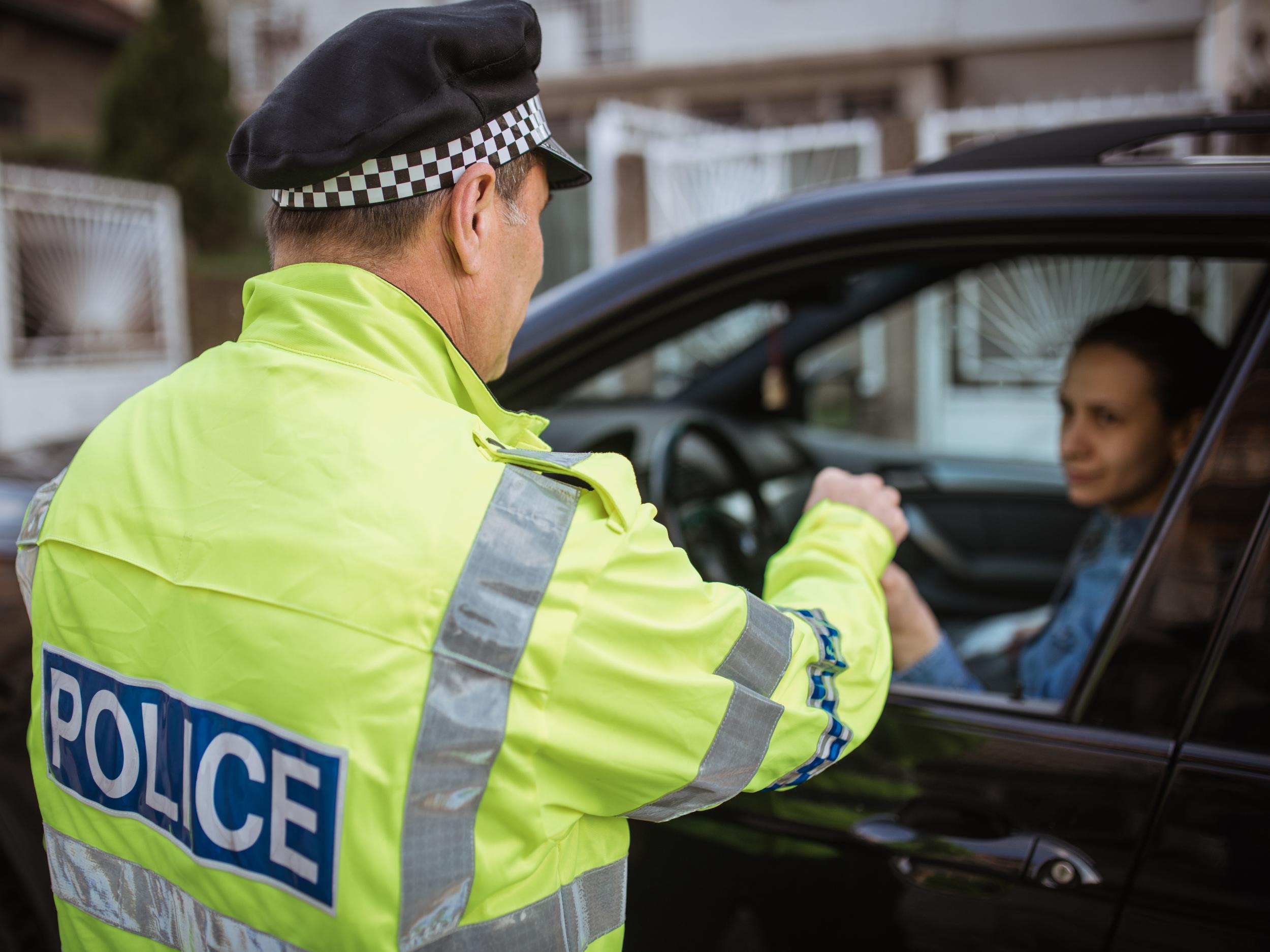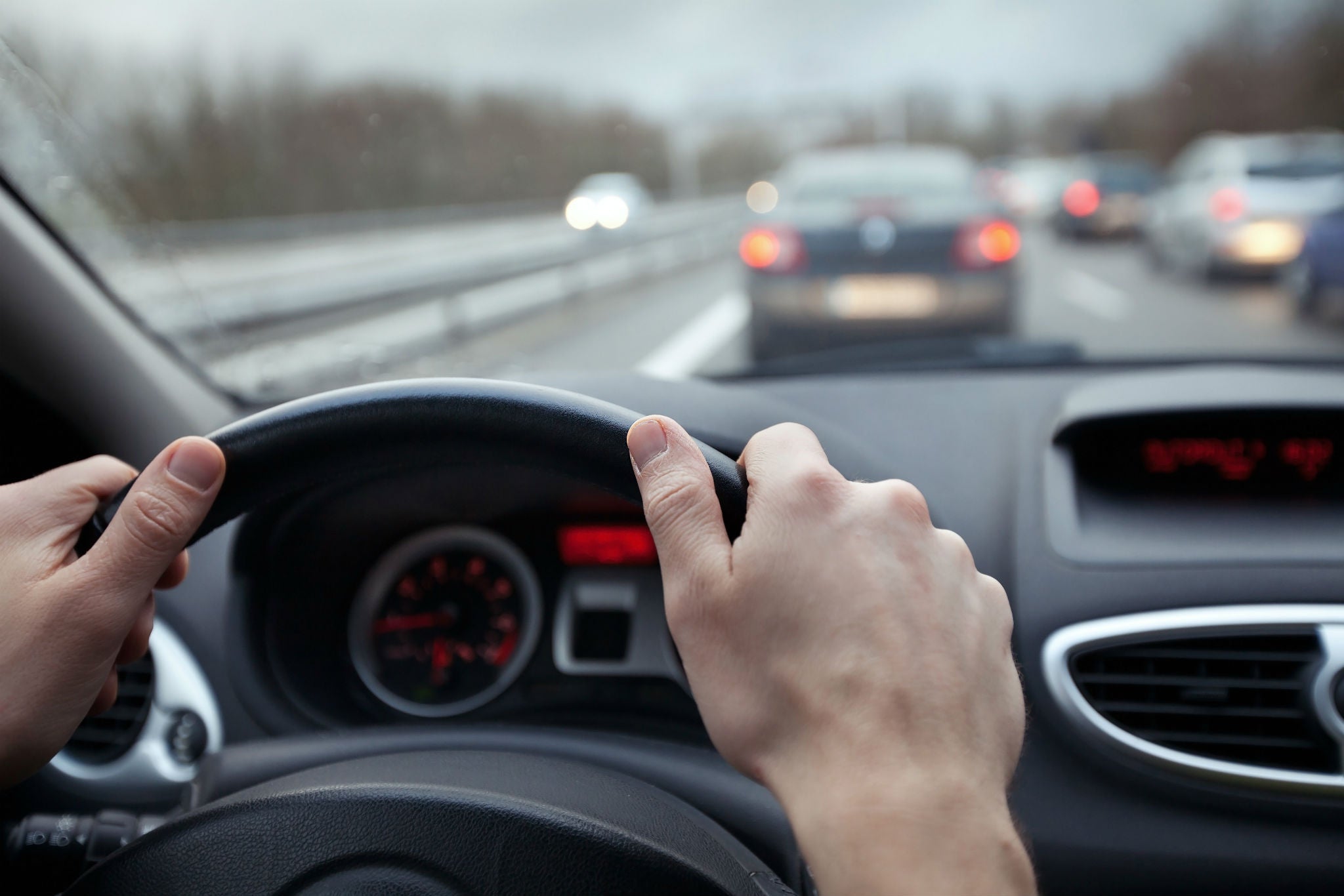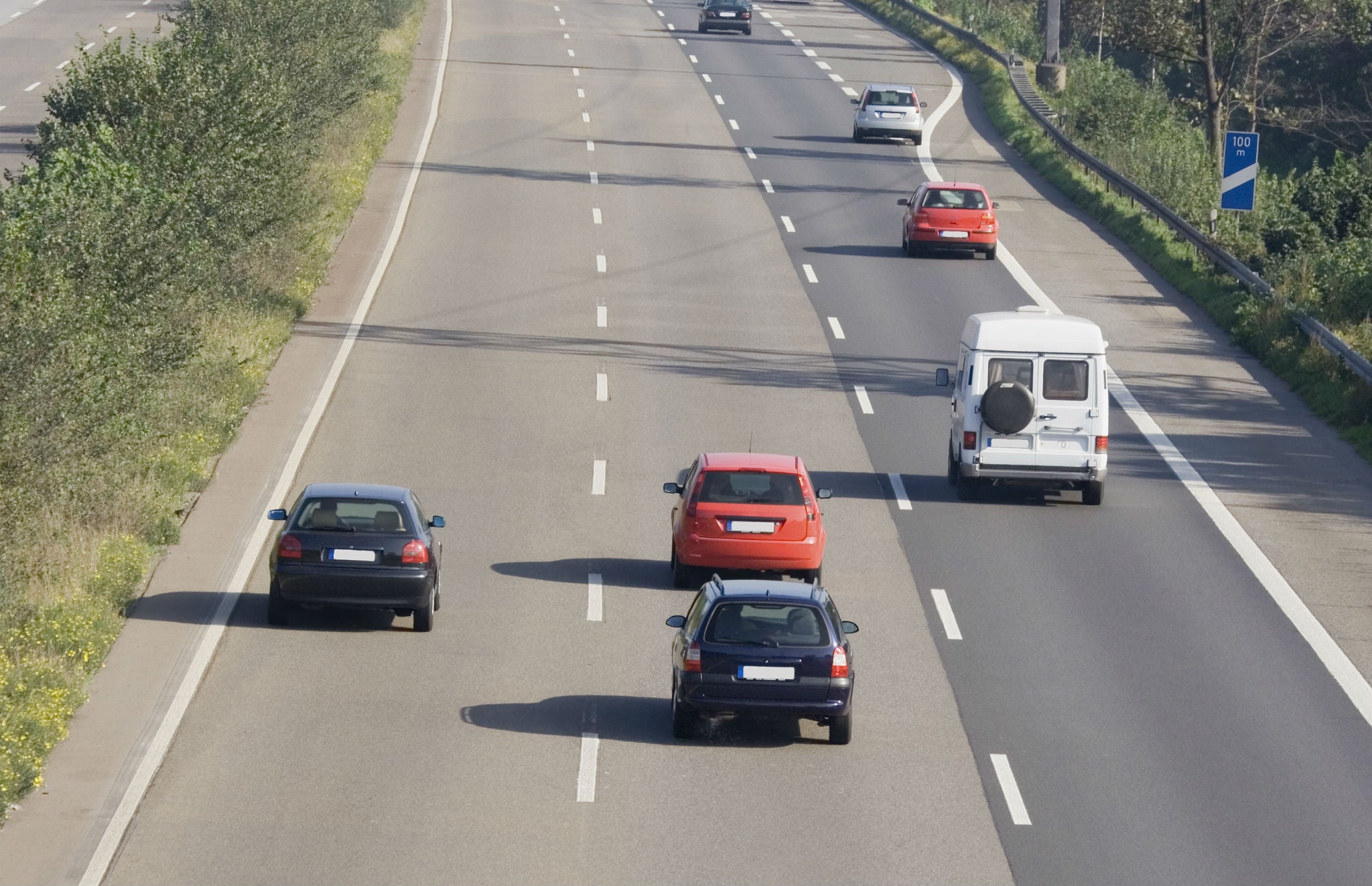How a National Speed Awareness Course took my ‘optimism bias’ down a peg
Driving a couple of miles-per-hour over the speed limit isn’t going to cause any real problem, is it? So thought David Barnett before he was caught, and attended a speed awareness course


Outside a corner shop across the road from the Carlisle Business Centre in Bradford, West Yorkshire, a billboard for the local newspaper proclaims “Thousands sent on ‘bad driving’ courses”.
Reader, I am one of those thousands. In fact, the story was published in the Telegraph & Argus on the very day that I attended one myself. But, please – National Speed Awareness Course. There were 24 of us in the four-hour session, and not one of us went in thinking we were “bad drivers”.
Who hasn’t crept above the speed limit now and again? We all had our excuses ready. We weren’t sure of the speed limit on the stretch of road we were caught on. We were late for something. It was dark. Somebody was driving up really close behind us. For me, I smugly thought I had a cast-iron excuse for getting caught by a speed camera doing 36 in a 30mph zone. I was rushing to hospital to take my wife to see her mother, who had been admitted by ambulance an hour or so earlier.
What you rapidly learn on a speed awareness course is that there are just no excuses that will wash with anyone.
Like everyone else on the course, I had taken the option as the potentially least painful one of three. After getting my letter informing me I had been busted bang to rights, I was given a choice. Pay the £100 fine and get three points on my (otherwise clean) licence. Go to court to fight the conviction. Or sign up to the speed awareness course (cost: £84) and not take the penalty points. An afternoon of being preached at to save £16 and a quarter of a driving ban? Count me in.
And, as the local newspaper story points out, I was far from alone. The Telegraph & Argus put in a Freedom of Information request to find out how many people had attended such courses since 2016. The answer is 221,541 people across West Yorkshire, which equates to 10 per cent of the county’s population.
We gathered in the lobby of the small conference and business hub at about 1pm on Monday afternoon, and I regarded my fellow recidivists. They were a mix of ages fairly consistent with the figures published in the Telegraph & Argus; the majority were men aged between 41-60 (the category I fall into). There were quite a few in the 25-40 age range, and one or two over-60s (including a chap who turned up in a motability scooter). According to the stats, borne out by the spread of attendees, the least well-represented cohort was the 18-24 range. Whether that’s because they don’t speed as much, they just take the fine, or they can’t actually afford to drive cars, wasn’t explained in the story.
The course was run by Akhtar and David, on behalf of the TTC Group, one of the country’s biggest providers of such education courses under the auspices of Ndors, the National Driver Offender Retraining Scheme. They are both trained driving instructors. I’ll keep their names at that, as confidentiality is key at these sessions. We are told it’s actually an offence to record or video what goes on there, and we have to turn our phones completely off. Apparently, this is because sometimes famous people attend. I had a surreptitious look around the room but didn’t recognise anyone. We are also advised that if we see someone from the course in the aisles at Sainsbury’s we are to refrain from waving and shouting, “Remember me from the speed course?”, because they might be with their families or boss, who don’t know they are, as the Telegraph & Argus billboard had it, “bad driver course” alumni.

According to the literature handed out to us at the start, the purpose of the course is fourfold. To help us to know what the speed limit is. To understand why a few miles per hour makes a difference. To control the speed of our vehicle, and to select a safe speed. The introductory booklet says that the organisers are very pleased we’ve decided to attend, and hopes we will find it useful.
It doesn’t feel very much like a punishment at all. Indeed, the first hour, which details “knowing the limit”, is a bit like a team-building exercise from work, with people you don’t really know from accounts and transport, or a first aid course. We have to write our names on little plaques and we are encouraged to chat to the other attendees on our table. Our first task is to go round the room looking at photographs of roads tacked to the walls and to write in our booklets what we think the speed limits are on those highways.
We are asked when we last looked at a copy of the Highway Code. I decide not to mention that it was probably 30 years ago, when I passed my driving test. Over the course of the first section, I actually learn something about speed limits.
And it’s all to do with streetlights. I probably knew this 30 years ago, or maybe I didn’t. Perhaps you all know this anyway. But here goes. If you’re driving down a road and there are streetlights, then there’s a default speed limit of 30mph. Doesn’t matter if it’s through a busy town or along a country lane. Still 30mph, unless you are told otherwise by speed limit signs that might say 40, 50 or that white one with a black stripe, the national speed limit.
If you are driving along a road with no street lighting, and aren’t told otherwise by speed limit signs, then the default speed limit is the national speed limit, which is 60mph on a single carriageway and 70mph – the same as you can do on a motorway – on a dual carriageway.
This is all stuff we know, or should know, or have forgotten. It’s the kind of thing the majority of us learn by rote so we can get through our driving test, then it goes out of the window
I point out that this seems a little counterintuitive; surely it would be safer to go faster on a country road where there actually is lighting than one without? But, them’s the rules, and they apply all the time. This jollies some of us up considerably; turns out we can go faster than many of us actually thought we could in some circumstances. It occurs to me that this probably isn’t the point of the speed awareness course.
Which, of course, it isn’t. David and Akhtar aren’t stupid. They know that the course is structured like this for a reason. And the reason is that the first section gets us all warmed up and settled in and it’s like a little game. And then they can hit us with the serious stuff.
Because, of course, that’s why we’re here. We have all been caught speeding, most if not all of us by the dreaded Gatso speed cameras. Which, as we all know, is just a money-making scam for the cops, right? I mean, what difference is three or four or six miles over the speed limit going to make? We’re all experienced drivers here.
This, says David, is our bias showing through. Our superiority complex bias – we are good drivers, we are better than everyone else on the roads. We can cope. Our self-enhancement bias – if anything bad does happen, it’s going to be somebody else’s fault. Our optimism bias – we’ve never had a crash or run someone down before, so why would it happen now?
We get some facts and figures. In 2017, 1,793 people died on the roads. That’s bad, but it’s not as bad as the mid-1960s, before speed limits were enforced, when 8,000 people died every year in what must have been highway carnage. Of those most recent deaths, 93 per cent were down to driver error.
We are shown a video. An expert driver is travelling in a car at 30mph. We see his stopping distance from being waved at by a man with a red flag to the car coming fully to rest. Surprisingly, perhaps, this is 23m, or 75ft. That’s quite a way. Well over a third of that is the “thinking distance”, the time it takes between our brains registering we need to stop to our foot slamming down on the brake and beginning the process of arresting the car’s forward motion.

The same experiment is carried out again but at 31 miles an hour. Exactly where the driver stopped before have been placed a pile of boxes on which the outlines of two children are printed. Yes, you can guess what happens. At just one mile per hour above the speed limit, braking at exactly the same time and point, the car ploughs into the cardboard boxes and flattens the virtual kids at 8mph. They might actually survive an impact at that speed, but they might not. And for every 1mph above the speed limit, the breaking distance and speed of impact increase exponentially, as does the likelihood of life-threatening injury. We are shown a graph that goes off the scale after 50mph. Hit someone at that speed and it’s goodnight, Vienna.
We are then introduced to what we are told is a new part of the course. It’s about stress and pressure, and what causes us to be distracted while driving. Some might consider this a little bit, let’s say, touchy-feely, and the course becomes a bit more like a self-help group where we are encouraged to discuss what annoys us on the roads (tailgaters seemingly the main culprit) and what we can do to calm ourselves down so we don’t take unnecessary risks.
This feeds into a session where we have to think about hazards on the roads, and we are shown a couple of dash-cam videos where potential dangers are highlighted, such as kids running along the pavement or other drivers suddenly pulling out of side-streets. But what can we do about such things? They’re beyond our control, right?
It all leads into the message that nothing is beyond our control when we are behind the wheel of a car. Most accidents involving vehicles (not pedestrians) are rear-end shunts. These can be avoided by keeping what we are told is a “bubble of safety” around our cars, and that means keeping six car lengths behind the car in front at all times. If we can’t keep that space, we are told, “it’s a ticking time bomb”.
This is all stuff we know, or should know, or have forgotten. It’s the kind of thing the majority of us learn by rote so we can get through our driving test, then it goes out of the window. David, in particular, is evangelical about us killing our speeds. He offers us some maths and science to show us that, in the long run, speeding actually costs us time rather than saves it.
For example, David knows about advance induction loops. These are buried in the road on the approach to traffic lights. If a lot of cars are speeding, the lights will change to red to slow the traffic down. Maintaining a legal limit means you will sail through traffic lights on green, promises David.
Akhtar also tells us that based on the average over-the-limit speed we were doing we would probably have saved ourselves a sum total of 17 seconds on our journeys where we were caught speeding. Compare that to the 14,400 seconds spent on the speed awareness course. Ha ha, Akhtar.
But these guys are driving instructors. They’re being paid to tell us to slow down. We have all ticked the boxes and we’re coming to the end of our course. Then David offers an insight into why he’s such a careful driver. Thirty years ago, he says, he was read the last rites in intensive care after a road incident. It’s quite a sobering moment.
As we leave, we are told that “getting in a car is the most dangerous thing you can do today”. It certainly feels like it the next time I get behind the wheel, and I studiously keep the car to a maximum of 30mph.
Will it last? There were a handful of people on the course who were attending for the second time, so perhaps not. Maybe those biases will take over again, that superiority complex, that self-enhancement. And perhaps most dangerously, that optimism bias that tells us “it’s not my turn today”. Except, says David, one day it might well be.
Join our commenting forum
Join thought-provoking conversations, follow other Independent readers and see their replies
Comments